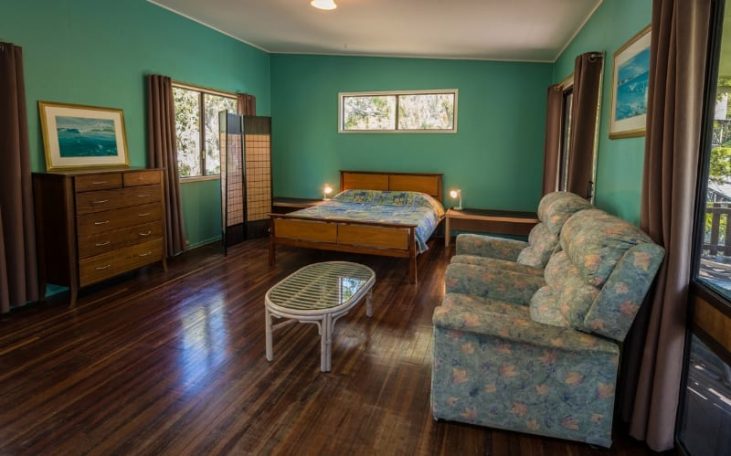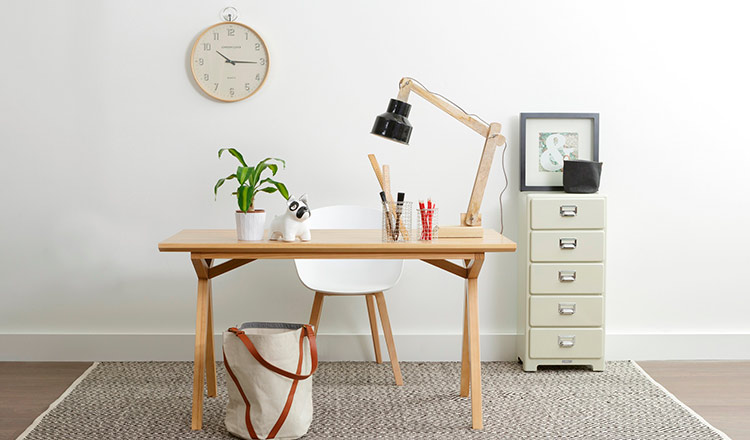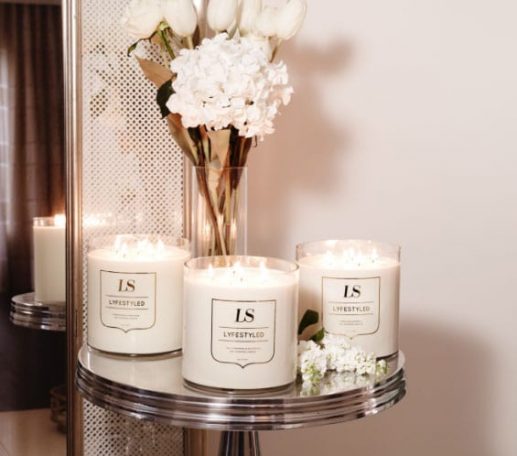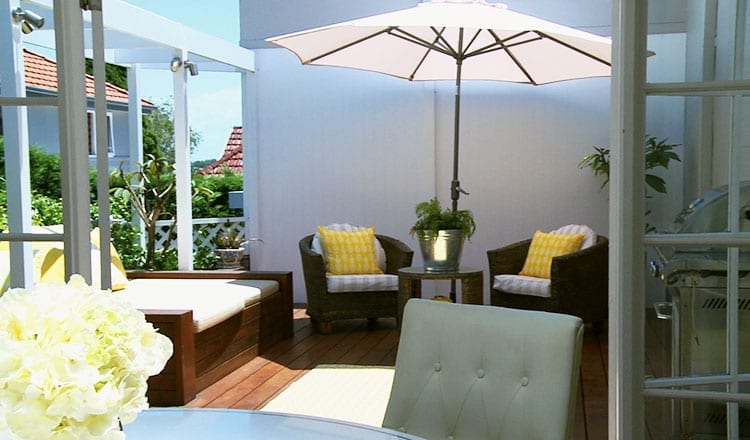How to enhance your wellbeing by Porter Davis Homes VIC Lead Interior Designer, Patrizia Romeo
The idea that interior design carries with it psychological power is not a new theory; there has always been a correlation between our mental wellbeing and the spaces that we live in. Interior design elements such as colour, texture, light and layout all affect how we interpret a space, and can help encourage feelings like relaxation, happiness or concentration. At a time when we are spending more time indoors than ever before, it’s helpful to know the small changes we can make to help us feel a bit better in our homes.

1. A healthy home is a happy home
Working from home these past few months means that on some days, we don’t even make it outside
for some fresh air. What’s good for the body is good for the brain, so considering the indoor air quality and toxin levels in our homes should be routine. Regularly cleaning the spaces we spend most of our time in and allowing fresh air to circulate is a great way to feel refreshed and ensure that our home is helping our health.
Good ventilation within your home is essential for removing air-born toxins and irritants (like dust and allergens). In humid climates or enclosed apartments, condensation can build up inside, resulting in potential mould growth and other related health issues.
Take advantage of sunny days by allowing your home to breathe. Open windows and doors to welcome fresh air, and clean fabric furnishings and decor regularly such as rugs, pillows, blankets and sheets. Investing in a dehumidifier is also a great way to keep your home dry.

2. Harness the power of plants
As well as looking good, there is evidence that suggests that house plants can help reduce feelings of anxiety and stress. But what plants should you choose?
Fiddle leaf figs are a great place to start if you are not an avid gardener, as they look great and require minimal care during the cooler months. Toxin-absorbing, air-purifying abilities of plants like pothos, aloe vera and ivy are worth considering on your next trip to the nursery. Scented plants have health benefits, too: the smell of flowers like jasmine and lavender have been shown to promote calm and welcome a good night’s sleep.

3. Colour yourself happy!
Colour theory suggests that certain shades, combinations and intensity of colours can evoke responses
that can affect emotions and mood. For this reason, the impact of colour on how we feel has been explored in all sorts of contexts, from increasing office and study productivity and boosting creativity to promoting a calm and relaxing mood.
Depending on what feelings you want to encourage in each room determines where you’ll be landing on the colour wheel. Reds, oranges, and yellows are usually seen to be more vibrant, bringing a sense of liveliness and intimacy to a room. Alternatively, blues, purples, lavenders and shades of green can be used to calm down a room and bring a relaxed vibe. The darker the hue of these colours, the more pronounced the mood.
When looking at colour temperature for a space, consider the size of the room. When we use dark and warm colours, these can make a small room feel even smaller, but a large room feel warm and cosy.
However, using cooler colours in a spacious room will leave the space looking open, fresh and light.

4. A clean room is a clean mind
Let your room breathe and try to be minimal with your selection of ornaments and décor on display.
De-clutter and be selective with what you have displayed, group items together and try to avoid busy patterns and loud colours in the down time areas of your home.
Choose furniture with storage solutions that will allow you to organise a room without everything being on display, this will make the area feel clutter free and more spacious.

5. Establish clear boundaries
Working from home makes spatial boundaries between ‘work’ and ‘home’ incredibly blurred, and there’s no doubt that without a clear divide, there are real challenges in switching off and finding a comfortable space to relax and unwind.
Moving study spaces outside of the bedroom is the first priority. Creating a permanent set up to work is critical, whether that be utilising a dead corner, a nook or forgotten guest room.
Make the workspace ergonomic, to reduce eyestrain try and find a spot that has natural lighting, or supplement it with an overhead light like a floor or table lamp borrowed from another room. You’ll also find benefit from matching the chair height to the height of your desk for comfortable seating and this will put less strain on your posture.
Adding some comfort items and a hint of personality to your new work area defines the space and makes it a place you’ll enjoy spending time in. Introduce one of your house plants as a new desk colleague, find a sentimental photo to place nearby, and add an aromatherapy diffuser or scented candle for extra calm vibes.

About Porter Davis
Porter Davis Homes was awarded the 2019 Housing Institute Association – Australian Professional
Major Builder of the Year award, which they have won six times in their twenty-year history. Leaders in design, Porter Davis Homes builds beautiful homes for families and first home buyers across
Queensland and Victoria. For more information about Porter Davis Homes displays visit:
https://porterdavis.com.au/visit-us/display-finder/ .







